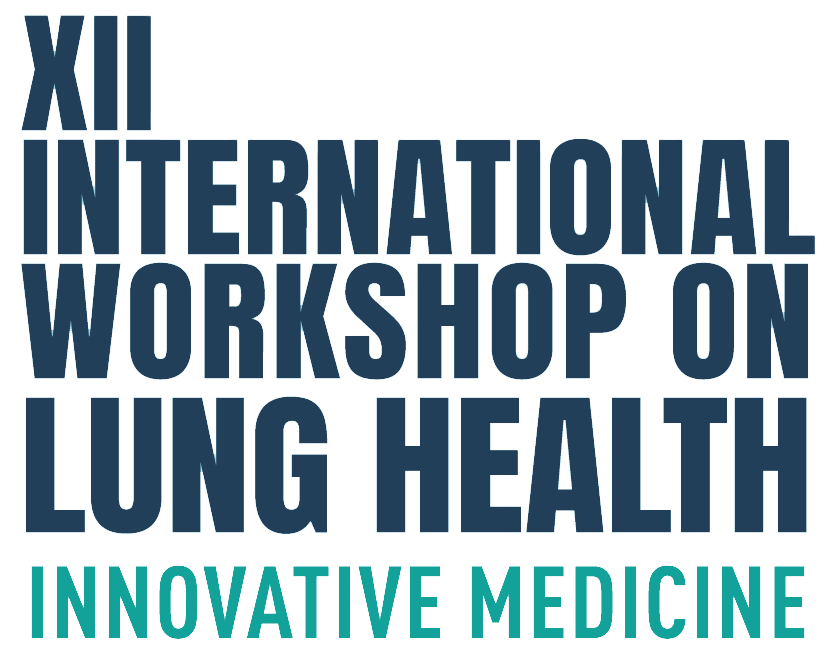LISBON
About Lisbon
Lisbon is the capital of Portugal and is one of the oldest cities in the world and the second-oldest European capital city (after Athens), predating other modern European capitals by centuries.
The city blends historic charm with modern vibrancy. Perched on seven hills along the Tagus River, it features cobblestone streets, colourful tiled buildings, and iconic yellow trams. During your stay, explore landmarks like Belém Tower and Jerónimos Monastery, savour fresh seafood, and enjoy stunning views from scenic miradouros (viewpoints).
Welcome to Lisbon.
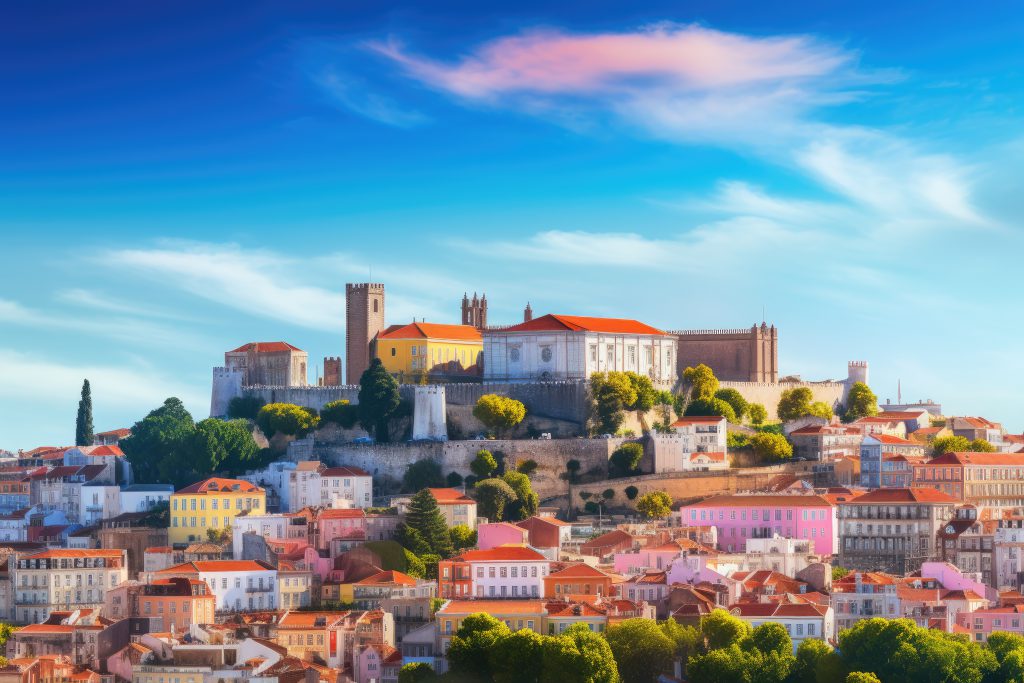
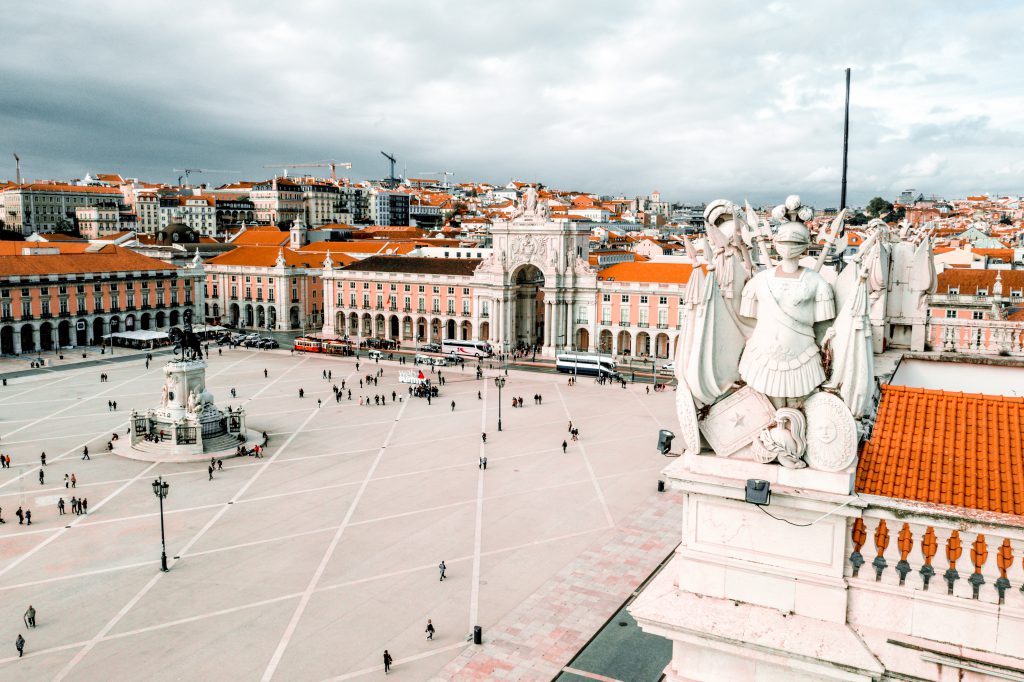
Lisbon is easily accessible. Major cities close to Lisbon include Porto and Seville, and there are international train lines and airlines to major destinations. The airport is just a few minutes from the city centre.
Lisbon Airport is just 15 minutes from the city centre by car or taxi, and just 30 minutes by bus.
Taxis are available at the airport, outside departures and arrivals.
As the city centre is close, taxis are an affordable option (even with luggage and/or pet fees - that may be charged separately by the driver).
Depending on traffic, the journey to the city center will cost between 12 and 17 euros, including luggage fees. Be sure to make sure the meter is turned on at the beginning of your journey and always ask for a receipt/invoice.
The Lisbon Airport has a Metro (subway) station with a direct line to the city centre. The 'Aeroporto – Saldanha' line takes you to downtown Lisbon in about 20 minutes. The Metro network will allow you to move around the city at ease. It is a quick and inexpensive way to get around, plus you'll get to experience Lisbon's subway stations – all with their own individual personality, décor and design.
You’ll need to purchase the '7 Colinas' / 'Viva Viagem' electronic travel card, which you can then top up for your journeys, and can be used for the Metro and also the Carris (bus network):
7 Colinas / Viva Viagem electronic card: €0.50
Single Fare Price: €1.45
24H Network Pass: €6.30
Several bus lines stop at the airport arrivals terminal, taking you to different parts of the city. However, please note that the maximum baggage size allowed in these buses is 50x40x20cm. If your baggage exceeds this size, you must take the airport's specific buses (Aerobus and Airport Shuttle).
Fare (on-board): €1.80
It's also easy to reach the city center by train. Every day, national and international trains arrive at Santa Apolónia, a station that is very close to the traditional neighborhoods and the Plaza del Mercado.
Station hours:
- Monday to Saturday: 06:00 to 22:05
- Sundays : 06:15 to 22:05
By car, you can take the A1 and A2 freeways, with national and international connections at certain points along the way. The scenery is magnificent and the diversity of the region will make you forget the hours of driving.
LISBON
How to get to Lisbon
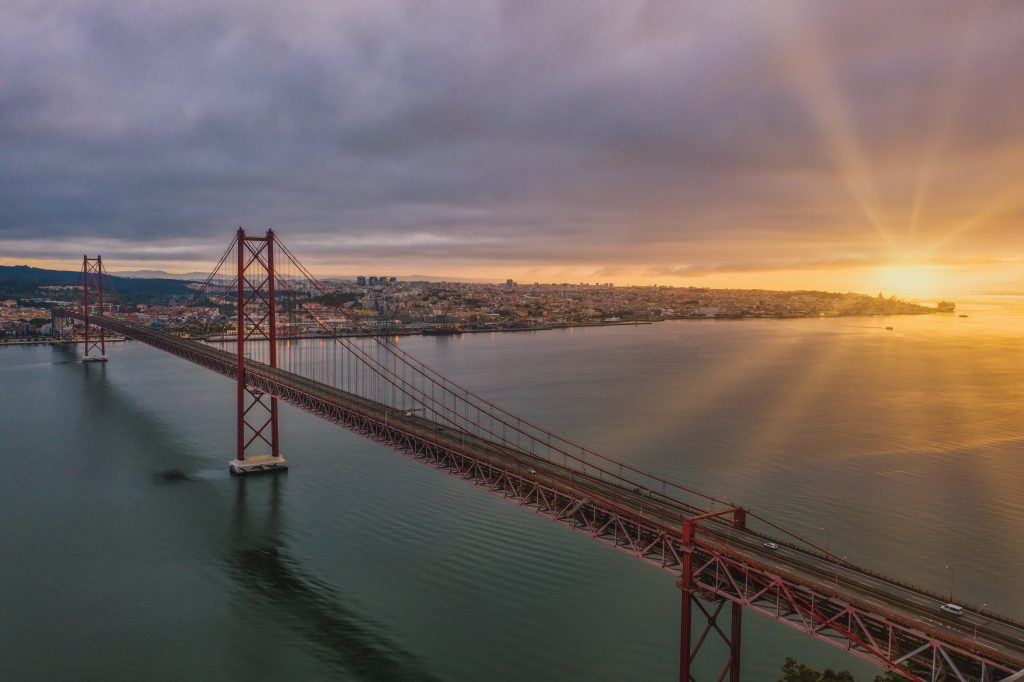
LISBON
Getting around
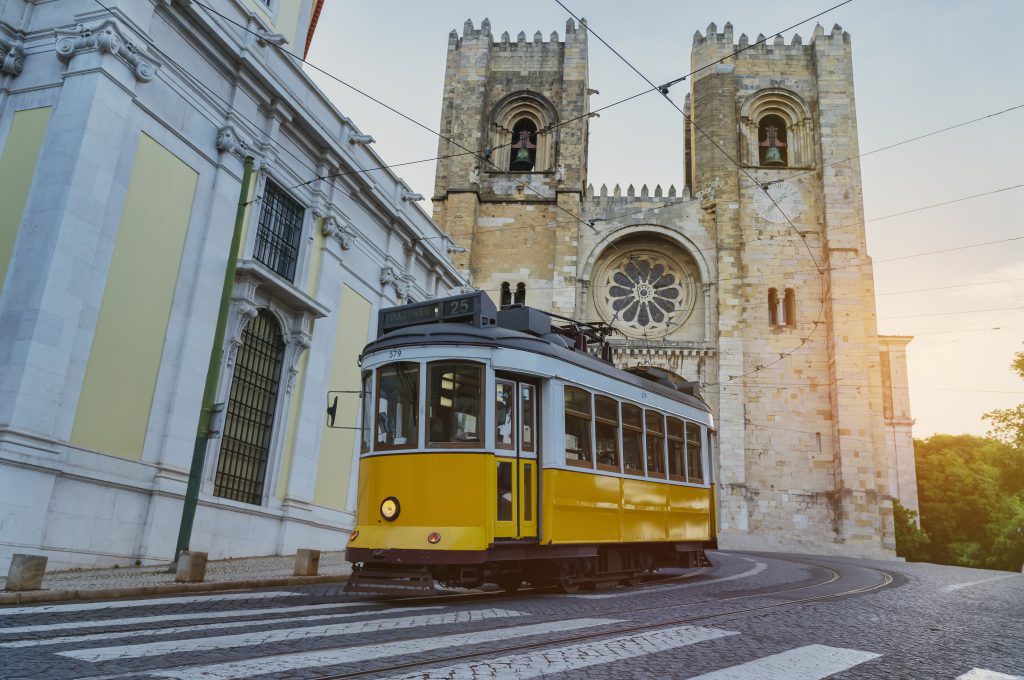
Public transport is the easiest way to get around Lisbon. Fast, punctual and up-to-date, it's easy to get to any part of the city. The Lisbon metro consists of 4 lines (blue, red, green and yellow) that run every day from 6:30 a.m. to 1 a.m. Tickets cost €1.25 and can be purchased from the ticket machines at each station.
Buses, streetcars and funiculars allow you to get around Lisbon while enjoying the view. To discover the city, we recommend streetcar line no. 28, which passes through all the interesting districts: Bairro Alot, Alfama, Graça.
The Lisbon Card gives you free travel on the metro, bus, streetcar and funicular for €18.50 a day or €39 for 3 days. It also gives you access to discounts on admission to the city's museums and monuments. It can be purchased online or at any Ask me Lisbon outlet in the city.
There are cab stands in the city center, outside many hotels and near the main attractions. Cabs are easily recognizable, with just three colors: black, creamy white or green. Make sure you can see the meter - which is only turned on at the start of the journey - and the driver's business card.
- Radio Taxis Lisbon (+351) 021 811 9000
- Cooptaxis (+351) 021 793 2756
This triumphal arch in Rua Augusta has always impressed those roaming Lisbon’s busiest pedestrianised street.
But now you can visit the top of this unique structure for a truly singular and impressive view of Baixa and the river. It symbolises the rebirth of a new Lisbon after the tragedy of the earthquake, fire and tsunami in 1755 that razed what stood before.
And it affirms, in Latin, “The Virtues of the Greatest”: the strength, resilience and achievements of the Portuguese people.
At the top stand the sculptures by Célestin Anatole Calmels of Glory crowning Genius and Valour. You can’t help but be inspired by these values as you admire the 360º view of the best Lisbon has to offer. The remaining statues, by Victor Bastos, represent figures of our history. On the left we find the Marquis of Pombal, the following are Vasco da Gama and Viriato and, on the right, Nuno Álvares Pereira.
Visit one of Lisbon’s most interesting cultural centres. With one of the best modern art collections in the Museu Coleção Berardo, the CCB is fully equipped to please.
The Centro Cultural de Belém is one of modern Lisbon’s biggest icons.
Designed by Manuel Salgado and Vittorio Gregotti, it was built on a special site. Its modern architecture contrasts gently with some of the most iconic buildings of old Lisbon.
If you walk from Jerónimos to the CCB, you cross centuries of history in just a few steps.
The CCB is one of the most popular places amongst Lisbonites and visitors for its closeness to the river, its gardens and cafés offering some of the best public spaces in the city.
With auditoriums, museums, temporary shows and major events, the CCB is a cultural hub with something for everyone.
Time Out Market is a must for food lovers. A meal here can be as simple as pizza from Zero Zero, or as complex as a multi-course affair of croquettes and sea bass salad with seaweed. One of the best reasons to visit, however, is to sample the cuisine from some of Portugal’s most famous chefs, including Miguel Castro e Silva, Marlene Vieira, Miguel Laffan, and Henrique Sá Pessoa.
Opening hours:
- Sunday - Wednesday: 10:00 to 00:00;
- Thursday - Saturday: 10:00 to 02:00
We take advantage of our time in Belém to discover the city from a new angle, on a cruise. We go to the Padrão dos Descobrimentos, the Monument of the Discoveries which pays tribute to Portuguese sailors and explorers, then board a catamaran which takes us on the Tagus for a few hours. We get a close-up view of the Red Bridge of April 25, the Statue of Christ the King perched on the opposite bank, then the Praça do Comércio and other jewels of the capital.
Located at the foot of the April 25th Bridge, in the heart of the Alcântara district, the LX Factory is a former industrial complex that has been converted into an alternative space that appeals to young Lisboners. You can browse through books in the impressively large Ler Devagar bookshop, bargain for vintage decor and savour local specialities such as pastéis de bacalhau, cod fritters, in one of the many restaurants. The LX Factory also houses boutiques, bars and cafés, and acts as a hub for start-ups.
Away from the city, we take to the hills of Sintra. This city, 30 km from the capital, is a treasure trove of historic castles and palaces, set against a backdrop of lush green and mountainous landscapes.
We start with the National Palace of Sintra, with its 16th-century azulejos, the National Palace of Pena, with its mix of colorful styles and lush parkland, before finishing with the Castle of the Moors, perched on a rocky outcrop and offering panoramic views of the surrounding area.
https://www.civitatis.com/fr/sintra/billet-palais-pena-jardins/?aid=101573&cmp=QVQF
This is probably THE must-see visit in Lisbon. Located on the banks of the Tagus River, the 16th-century fortified tower is a Unesco World Heritage Site. It was built to protect the entrance to the port of Lisbon.
Its size and Manueline architecture (a style peculiar to Portugal) make it particularly impressive, but a visit makes perfect sense once you're at the top. You'll be able to admire its fabulous balconies, turrets and, above all, the statue of Notre-dame-du-bon-succès.
The second gallery in Spain
Instituted in September of 1835 and official inaugurated in 1841. It is located in the so-called Plaza del Museo, which is presided over by a sculpture dedicated to Bartolomé Esteban Murillo. It is a fundamental museum for getting to know Sevillian Baroque painting, especially the masters, Zurbarán, Murillo and Valdés Leal, as well as 19th century Andalusian painting. The building that currently houses the Museum was originally built as a convent of La Merced, for the Order of La Merced Calzada de la Asunción, founded by San Pedro Nolasco during the reign of Fernando III.
Highlights of the collection include work from the 17th century, including the works of the most representative Spanish painters, such as Murillo, Velásquez, Zurbarán, and Valdés Leal.
Collections of Andalusian Popular Ceramics in Europe
Traditional Customs of Seville is located in the María Luisa Park, in the Plaza de América. It occupies the Mudejar Pavilion, a building built in 1914 by the architect Aníbal González. on the occasion of the Ibero-American Exhibition in Seville (1929). It includes a space of 5496 m² for permanent exhibitions and services. In the Mudejar style, it is built in exposed brick with ceramic applications full of designs and fantasy.
During the Ibero-American Exhibition it was known as the "Pavilion of Ancient Art". Reforms were carried out in 1972. Its functions as a museum have been carried out since March 4, 1973, when it opened its doors to the public. The First Floor and the Semi- basement Floor are equipped as a museum. It is also equipped with an Audiovisual Room, a Conference Room. The collection of Andalusian Traditional Ceramics in the museum is one of the most complex in Europe, as the one in the Hamburg Museum.
Located in the Remedios neighbourhood, very close to where the Seville Fair is held in April, the Parque de los Príncipes owes its name to the previous King Juan Carlos and Queen Sofia, who were princes when the park was inaugurated.
Inside, there are two playgrounds, an area for sports, an area for dogs and a river full of ducks with a central island accessed by a bridge. There are rosebushes and a collection of citrus trees throughout the park. We can find oranges, jacarandas, tipuanas and Japanese plum trees, among any others.
Maria Luisa Park is the most famous park in Seville and one of its best sources of fresh air. Formerly the private gardens of the San Telmo Palace, the land was donated in 1893 by the Infanta Maria Luisa Fernanda de Borbón (the Duchess of Montpensier). The land was reformed by the French Engineer Jean-Claude Nicolas Forestier, conservator of the Boulogne forest in Paris, who gave it a romantic touch, inspired by the gardens of the Generalife, the Alhambra and the Alcázares of Seville.
The Plaza of España and the Plaza de América were opened in the park for the Iberoamerican Expo in 1929, being some of the main attractions. Their fountains give that arabesque touch that adds sound to help you peacefully relax among its many tiled and detailed benches, which describe works of literature and other arts
LISBON
What to see
- what to do

